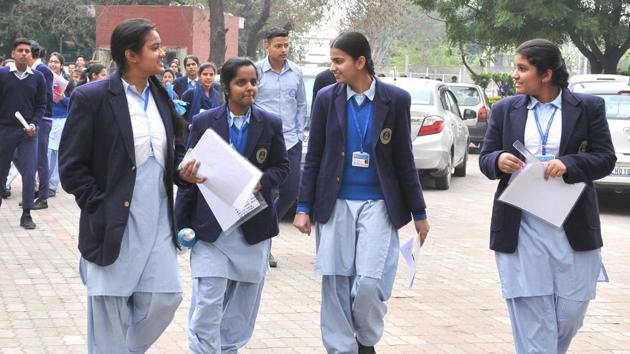Class 12 CBSE board examinations: Get the success formulae and concepts right
Modern physics, semiconductors and ray optics with all devices are the easy topics; but make sure you’ve mastered alternating current and the wave optics in physics
With the Central Board of Secondary Education (CBSE) Class 12 physics examination scheduled on March 2, students in all probability will be finalising their revision now. Often rated as ‘difficult’, physics can be a very scoring (and interesting) subject if you take the pains to clear all your concepts first.

“Brief notes made during revision help, says Kuldeep Singh, physics teacher at the Government Model Senior Secondary School (GMSSS), Sector 16 . The best thing is to study these notes in the few days before the exam.
No topic should be ignored if the students want a good score, he says, explaining that “Modern physics, semiconductors and ray optics with all devices are the easy topics. On the other hand, alternating current (AC) and the wave optics are difficult.”
Savinder Singh, physics teacher at GMSSS, Sector 40, says many students usually don’t find optics easy to understand, even though one part of optics, ray optics, is studied in classes 9 and 10. “However, wave optics is a new concept for students. Thus it is very important that students study it thoroughly,” he advises.
“According to CBSE guidelines each chapter has been given a fixed weightage, so no topic should be left out,” says Kuldeep.
CBSE seems to have also adopted a new paper pattern in physics from 2020. “There will be 20 questions of one mark each, including one-liners or multiple choice questions or both. Till last year, there were only five one mark questions,” says Savinder
Such questions are easy and don’t take much time as they just require one or two-line answers. “Always remember that questions with higher scores require more time,” he adds.
On the paper pattern, Kuldeep says, “it has 20 questions of one mark each, seven questions of two marks each, seven questions of three marks each and three questions of five marks each.”
Students might be asked about devices such as cyclotron and moving coil galvanometer in the five mark and three mark questions. What they must not miss in their revision are ray diagrams of microscope and telescope and symbols of the diode, LED and Zener diode, he adds.
To those revising physics lessons at the last minute, Kuldeep says:“Take up chapters and topics you have done during the year and are familiar with. Don’t start on something new and get confused because you are short of time.”
Revise important formulae, circuit and ray diagrams right before the exam. It should be clear in your mind, he says, adding, students must also check out question papers of the previous years and CBSE sample papers.
Last by not least, the 15 minutes that students get at the beginning of the exam to go through the paper must be utilised effectively. “Students should divide time as per the weightage of each chapter and during the exam as per the weightage of each question,” he adds.
 Get alert on your mobile and email as soon as the result is declared. For this, please provide information.
Get alert on your mobile and email as soon as the result is declared. For this, please provide information. 





